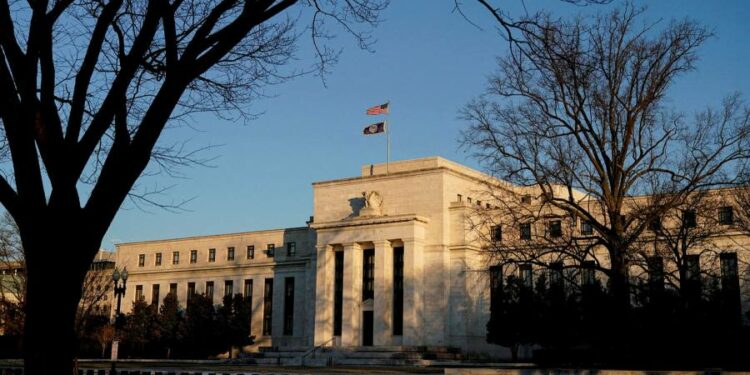US government bond prices dropped on Monday ahead of the Federal Reserve’s monetary policy meeting later this week, as traders weighed the prospect of interest rate rises to curb surging inflation.
The yield on the 10-year US Treasury note, which moves inversely to the price of the benchmark government debt security and sets the tone for borrowing costs worldwide, rose 0.09 percentage points to 2.09 per cent — its highest level since July 2019.
The sell-off in US bonds was a “reaction to the hawkishness of the [European Central Bank]”, said Sebastiano Chiodino, head of fixed income at Generali Insurance Asset Management — referring to the ECB’s decision last week to scale back its bond-buying stimulus package in response to spiralling inflation, despite the potential hit to economic growth from Russia’s invasion of Ukraine.
“If the ECB is hawkish, you’d expect the same from the Fed,” given that the US economy is less exposed than Europe’s to the war in Ukraine, Chiodino said.
The yield on Germany’s 10-year Bund, which serves as a barometer for eurozone borrowing costs, rose 0.06 percentage points to 0.33 per cent, its highest point in more than three years.
At its March 16-17 meeting, the Fed is widely expected to raise its main funds rate by at least a quarter point, having pinned it close to zero since the start of the coronavirus crisis two years ago, in a move that may influence other central banks to raise borrowing costs despite the economic risks of the war in Ukraine.
Consumer price inflation in the US rose to an annual rate of 7.9 per cent in February, a fresh 40-year high, while price rises have also hit a record in the eurozone and are expected to exceed 7 per cent in the UK this spring.
Markets are now pricing in almost seven interest rate rises by the US central bank in 2022.
“Chairman Jay Powell has signalled that the US Federal Reserve will start hiking rates with a 25 [basis point] move,” analysts at research house Gavekal said in a note to clients.
“However, a 50bp hike cannot be ruled out as inflation and inflation expectations continue to soar.”
In equity markets, Wall Street’s S&P 500 index added 0.3 per cent in early trades and the technology-heavy Nasdaq Composite slipped 0.1 per cent lower, following the worst week for US stocks in nearly two months.
Across the Atlantic, European stocks rose on hopes of talks between Russia and Ukraine. The regional Stoxx 600 share index, which has fallen more than a tenth so far this year as investors became increasingly concerned about sanctions against Russia choking off commodity supplies and causing recessions, added 1.2 per cent.
Elsewhere, shares in China fell on signs that widespread lockdowns could once again become commonplace as the world’s second-largest economy deals with its biggest Covid-19 outbreak since the start of the pandemic two years ago.
Hong Kong’s Hang Seng index fell almost 5 per cent and China’s CSI 300 index dropped 3.1 per cent after 17.5mn residents of Shenzhen were put under lockdown to contain a surge in cases of the Omicron coronavirus variant.
The restrictions followed similar measures in Changchun, a city of 9mn in north-east China, with cases also rising in Shanghai and a number of other big cities.
Oil benchmarks also dropped on hopes that Russia was more willing to engage in serious negotiations with Ukraine.
“If you compare the positions of both delegations at the talks at the start and now, then there has been substantial progress,” Leonid Slutsky, one of the Russian negotiators, said in an interview with RT Arabic, a Russian state-owned news channel.
Brent crude, the international benchmark, fell 5.6 per cent to $106 a barrel.
“Oil prices continue to demonstrate volatility on the back of uncertain incremental supplies from outside of Russia, in addition to continuing geopolitical risk from the war,” said Kaushal Ramesh, senior analyst at Rystad Energy.











